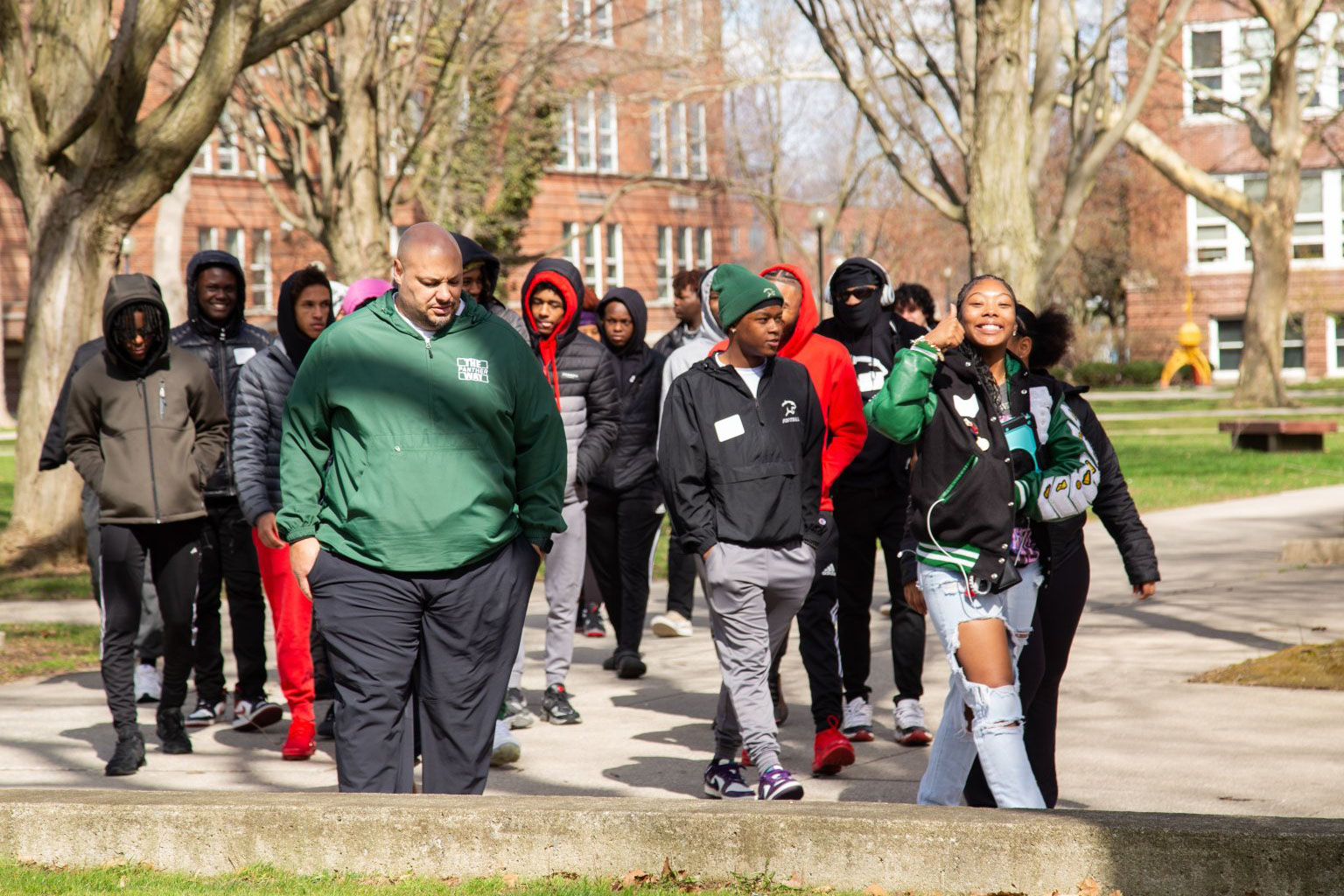On March 20, 67 high school students from across St. Joseph and Elkhart Counties gathered for Goshen College’s first ever African American Spring Open House. The open house was a coordinated effort spearheaded by Lawrence Giden, specialized community engagement coordinator. Black Student Union facilitated the event, along with assorted faculty and staff.
For the second time in the college’s 130-year history, African American students in the community were specifically given the opportunity to explore campus, learn about the opportunities offered by higher education and hear from current GC students, staff and faculty about their lived experiences. GC hosted one open house previously, towards the end of last fall semester.Incoming students were welcomed by two student leaders, Kennedy Stewart and Kaitlyn Johnson, the upcoming president and vice president of BSU respectively. Additionally, Solidia Brown, assistant to academic programs, and Triest Fisher, the administrative assistant for the academic departments, also joined. Additional facilitators included Aja Ellington, Alex Brito, Billy Easton, Jesse Loewen, Spencer Castillo, Todd Johnson and Regina Shands Stoltzfus.
Giden, a licensed minister, noted the historical, restorative and spiritual significance of the event.
“This open house was a good example of what I can do in my position to help the Black community,” he said. “God sees Jim Crow. God sees separate but equal. God sees the lynching. God sees sundown towns, and God says, ‘I’m sending people to go deal with that.’”
With Goshen’s history as a “sundown town,” Giden said, “This is about so much more than education. I see this as justice and I see it as spiritual.”
The event included sessions on college admissions information, personal anecdotes, interactive activities, networking, shared conversation and presentations on student activism.
Jakyra Green, a senior and the current president of BSU, said, “This event serves as a powerful reminder to Black youth that they have a lot of potential, regardless of the challenges they have and will face.”
She said the event was beneficial even if students don’t choose to attend GC, because it builds community among Black students, leaders and faculty members. “Having that representation is important. I emphasized to the students the power of their voices — how speaking up for others and advocating for important causes can create meaningful change,” Green said.
Even so, Green was disappointed by the low participation by the GC administration. “Black students and faculty do the work and empower the Black community,” she said. “It’s disappointing and telling when some people who should’ve been present weren’t.”
Shands Stoltzfus, who was involved in the intentional conversations held throughout the day, said, “I love that we are able to make space for those students to come here and that we made the space for our students here to speak their truth.”
Many students and staff, including Ellington, GC’s director of diversity, equity and inclusion, expressed hope for the future, calling events such as the open house “an ongoing commitment to diversity and multicultural understanding.
By acknowledging and addressing historical and systemic inequities, we actively work towards a more equitable educational experience for all.”
Ellington said, too, that she appreciated “the willingness of both students and speakers to engage in candid conversations, [which] speaks volumes about the importance of creating spaces where authenticity and vulnerability are not only welcomed but celebrated.”
“It’s moments like these that remind us of the power of human connection and the impact it can have on shaping perspectives and fostering understanding.”



